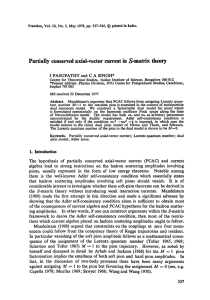Homework Set 14A PH 113 – 10
advertisement
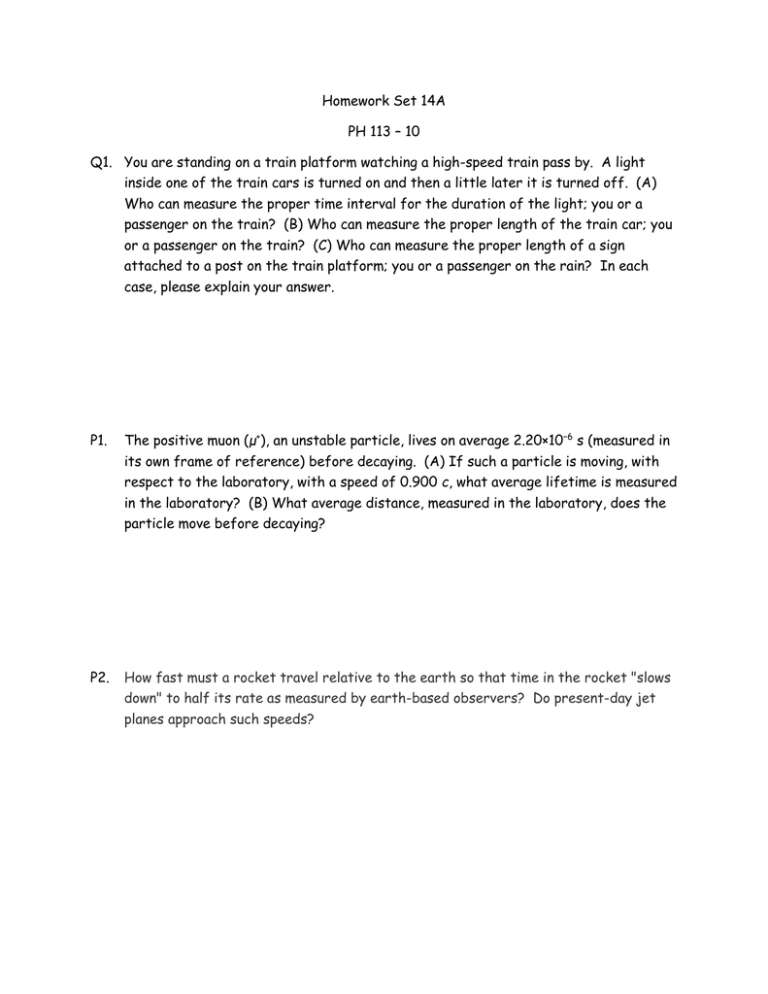
Homework Set 14A PH 113 – 10 Q1. You are standing on a train platform watching a high-speed train pass by. A light inside one of the train cars is turned on and then a little later it is turned off. (A) Who can measure the proper time interval for the duration of the light; you or a passenger on the train? (B) Who can measure the proper length of the train car; you or a passenger on the train? (C) Who can measure the proper length of a sign attached to a post on the train platform; you or a passenger on the rain? In each case, please explain your answer. P1. The positive muon (μ+), an unstable particle, lives on average 2.20×10−6 s (measured in its own frame of reference) before decaying. (A) If such a particle is moving, with respect to the laboratory, with a speed of 0.900 c, what average lifetime is measured in the laboratory? (B) What average distance, measured in the laboratory, does the particle move before decaying? P2. How fast must a rocket travel relative to the earth so that time in the rocket "slows down" to half its rate as measured by earth-based observers? Do present-day jet planes approach such speeds? P3. A spaceship flies past Mars with a speed of 0.985c relative to the surface of the planet. When the spaceship is directly overhead, a signal light on the Martian surface blinks on and then off. An observer on Mars measures that the signal light was on for 75.0 μs. (A) Does the observer on Mars or the pilot on the spaceship measure the proper time? (B) What is the duration of the light pulse measured by the pilot of the spaceship? P4. The negative pion (π−) is an unstable particle with an average lifetime of 2.60×10-8 s (measured in the rest frame of the pion). (A) If the pion is made to travel at very high speed relative to a laboratory, its average lifetime is measured in the laboratory to be 4.20×10-7 s. Calculate the speed of the pion expressed as a fraction of c. (B) What distance, measured in the laboratory, does the pion travel during its average lifetime?
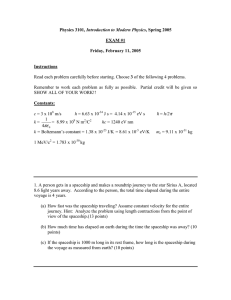
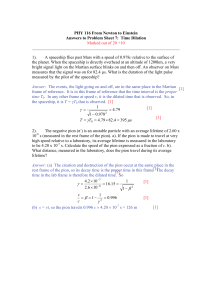

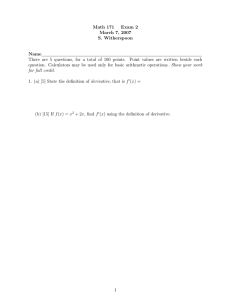
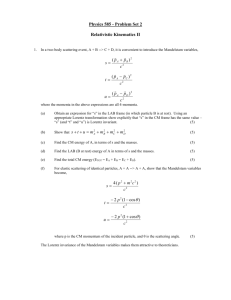
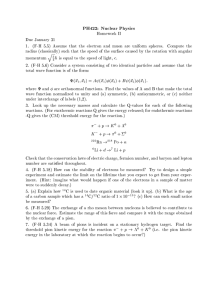
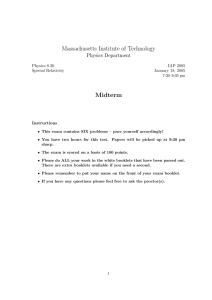
![Separated Response Function Ratios in Exclusive, Forward [superscript ±] Electroproduction Please share](http://s2.studylib.net/store/data/011958792_1-4199dcaeaa81889cdd29939ac1ab0da4-300x300.png)
